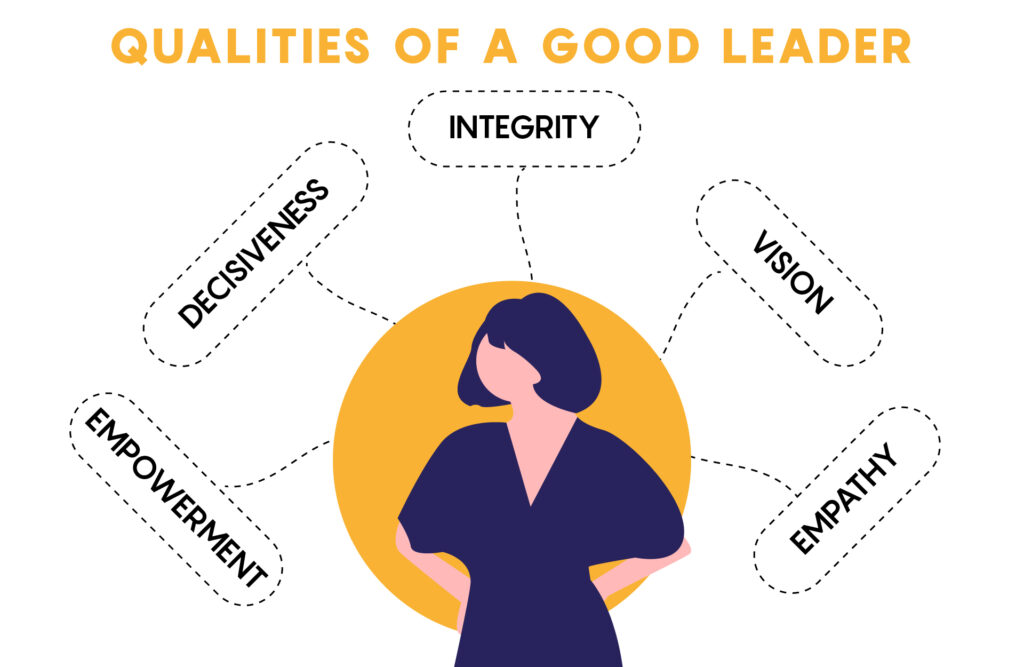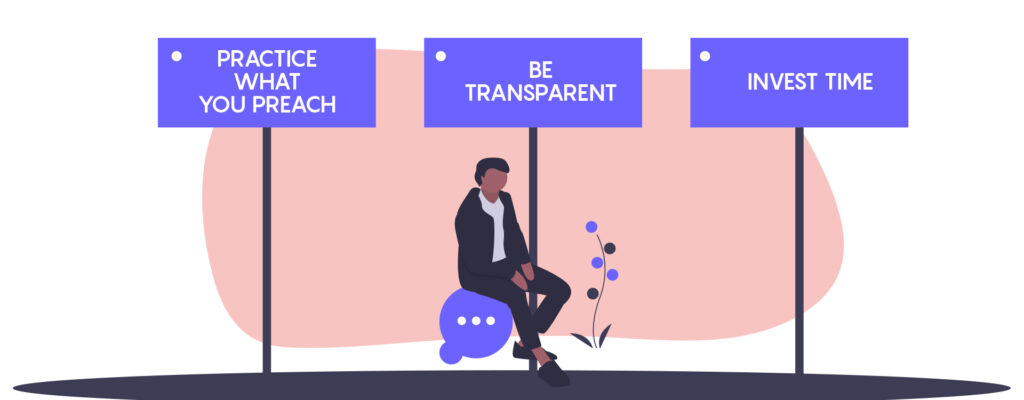What do Henry Ford, Mary Barra and Jack Ma have in common? They are transformational leaders – people who changed forever the way businesses are run. Ma has revolutionised digital retail/e-commerce in China. Barra played a pivotal role as the CEO of General Motors and pulled the company back from the edge of bankruptcy. Ford, the legendary carmaker, was an empathetic leader who never failed to empower his people and embrace diversity. He had broken ground in labour policies by nearly doubling the wage of an average auto worker and enabling a five-day, 40-hour working week.
‘‘
Leadership balances between doing what is right for the company and what is right for the employees. Finding the right balance is the hardest part of any leadership role.
What Makes A Good Leader?
Despite countless dictionary terms, the best way to describe a leader would probably be how John C. Maxwell put it, “A successful person finds the right place for himself, but a successful leader finds the right place for others.” A leader is someone who puts the needs of others above their own, actively listens to his team and has the foresight to achieve certain goals. No two people are the same and the same is true for leaders. Everyone has their way and style. So now the question is: What makes a good leader?
Integrity
Maintaining the company’s values while still delivering what you promised to the public as a business is a tough line to walk sometimes. You need to be able to uphold these values in such a way that it reflects the core beliefs on the brand in the eyes of the public. Show your team, employees and your customers that they can count on you.
Vision
People believe in people more than they do in mission statements and that is why a leader should have a clear vision as to what it is, they want the company to achieve. They should inspire confidence in others and show them that it is doable.
Decisiveness
Vision is not enough unless it is implemented. Do you have the courage and the decisiveness to make things happen the way you want? Decision-making comes with the territory and proves to be crucial when there are hard choices to be made.
Empathy
A good leader should be able to interact in a humane way. They need to consider how others view their goals and send across a clear and empathetic message in a way that will get people on the same page. People respect empathy and having their point of view considered.
Empowerment
We have all heard it many times by now, but here it is again – Delegate the work. A sign of a truly great leader is one that takes a hands-off approach. They empower their team to do the work and trust them to get the job done. Only step in when there is a problem and only to offer solutions, not to make the problem worse.

Lewin’s Psychological Case Study
In 1939, German-American psychologist Kurt Lewin, conducted a study on the different types of leadership to find out which was the most effective model to follow. His early studies were revolutionary – they established the three main types of leadership from which all other types were born. Let us take a look at the three primary categories:
Authoritarian
It is not a democracy. This style of leadership adopts a top-down input method, which means that there is little to no input from the team, while the leader maintains total control. It leaves no room for trust and is not very applicable in this day and age.
Democratic
A company that gives its employees an equal voice is one that is under a participative leadership. This includes work culture, workflow, the policies, the pay and even the hours. People are more committed to achieving a goal when they have a say in the matter.
Laissez-faire
The French term for ‘leave alone’. It emphasises on the need for a hands-off approach where delegation is key. One should keep in mind that being too hands-off can have its downfalls. Employees may find it confusing or lack the motivation to reach an end goal. A healthy balance control and delegation is needed in this approach.
The experiment involved school children who were separated into these three categories and put to work on an arts and crafts project. The researchers observed that the children following the democratic model performed more effectively as they seemed to collaborate better and seemingly inspired each other to meet the end goal. This shows us that at all levels, regardless of age or work, one thing is a constant – we are all human beings and allowing each other to voice ourselves lends more value to the workflow.
Having said that, the other models of leadership are not to be looked down upon. Like the authoritarian style, it may not be the most widely applicable format in the modern workplace, but it has its advantages. Say for instance you are training a team of young interns for a very important job, the initial interaction will have to be authoritarian, as more of one-directional guidance is needed. With all this taken into consideration, the best form of leadership is one that maintains a healthy balance between all of these styles.
What’s Your Leadership Style?
Leaders don’t always have to be born, a lot of the time, they can be trained and taught. What is leading if not a learning process. Let us have a look at what kind of leader you could learn to be:
Transactional
A carrot-and-stick approach where employees get one or the other for the quality of work. This works well for corporate houses but fails to establish a relationship of trust.
Agile
Modern problems require modern solutions, and situational leadership fits that bill. It emphasises the need for flexibility and adaptability. It allows a lot more freedom and creativity when it comes to problem-solving. For example, say you suddenly find yourself short-handed while working on a big project for an important client, an agile approach lets you quickly find a replacement who can fill that role and keep the team moving forward.
Transformational
They are the ones who encourage and motivate others to move forward through their own example. This type of leader concerns themselves with upholding the moral standards of a company and nurturing a positive work environment.
The Mentor
As the name suggests, this refers to a type of leader who acts as a guide rather than a boss. They take the time needed to grow the skills of the people on their team and teach them the best way to tackle any specific problem within the bounds of the company. It works very well for establishing healthy workplace relationships and for skill growth.
The Bureaucrat
He/she is more concerned with maintaining the norm in the company. They fixate on the rules and regulations of a company and prevent others from deviating from it at all costs. This has its advantages from a business point of view, as it is a business-first approach but is not so great in terms of establishing a working relationship with the employees.
‘‘
The type of leader you are will determine the quality and methodology of the organisation, so choose wisely. Contrary to popular belief, it can be learnt like any other skill in management.

The Bottom Line
Practise what you preach
All this is well and good in theory but implementing it in the workplace is another question. Every leader needs the right team, so start there. Recruit the right combination of people to perform specific roles and invest in your vision for the business.
Be Transparent
Next would be to make your goals, intentions and instructions crystal clear. Miscommunication is not an option and if there is, it is your responsibility to correct it. That said, it is not a one-way street. Listen as much as you talk and give the team a chance to openly and without consequence, criticise the workflow. This is how you will find the faults in the system.
Invest your time
You can be hands-off, but that does not mean you can relax. If you expect your employees to work hard, you should too. The very essence of ‘practice what you preach’. As the saying goes: ‘Lead by example.’ Above all, show appreciation and support. The mark of a truly great leader is one who takes a moment to make sure people feel valued.
For example, when a Starbucks store in the U.S. was robbed in 1997, three employees were killed. The CEO Howard Schultz – Instead of making a statement or calling a legal team – flew down to Washington D.C. and spent the week with their families and his other employees. Sometimes it is not about doing what might seem best for the business, and more about doing what is human.
Whatever the case, at the end of the day, the decision falls to you as to what kind of leader you want to be. Regardless of the type of leader you are, make sure to have a vision.
Read up on how to craft the perfect vision statement, so you can build your leadership strategy around that!




